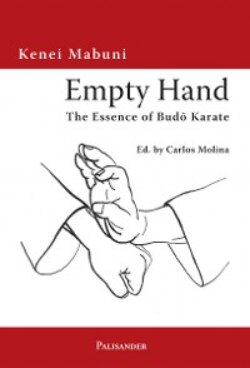Читать книгу Empty Hand - Kenei Mabuni - Страница 11
The Emergence of Modern Karate
ОглавлениеThe man who later was called “founder of modern karate” was Itosu Ankō (1830-1916), also named Yasutsune. He was the greatest master of the Shuri-te, which represents the original Okinawan hand-fighting techniques, te.4 Master Itosu reorganized karate when it became part of the official curriculum of middle school education in Meiji-era Japan.
Master Itosu chose traditional techniques and modified them in such a way that they could be used for physical education. According to the ideals of modern physical education, highly dangerous techniques where replaced by techniques that were demanding and rich in substance and at the same time efficient with regard to physical education. So, the Passai dai kata contains a sequence from a side sweep (yoko barai) to a kick (geri), which was originally a movement from a spear hand stab in the eyes (kaishu metsubishi) to a kick to the genitals (kinteki). – Itosu Ankō created for example the group of the five Heian kata which is still very popular. According to the Japanese word Heian, which means calm and peaceful, this kata does not contain attacks on the so-called “golden targets” (e.g. the genitals and other vital points) and no dangerous techniques like the “eye crusher” (metsubishi).
The founder of Kōdōkan Jūdō, Kanō Jigorō (1860-1938), proceeded in the same way when he removed all throwing techniques (nage waza) and blows (atemi) which had the potential to kill from traditional jūjutsu, thus developing modern jūdō. These were results of the modernization process the movement for cultural reform was aiming at.
But in Shitō karate a lot of old kata remained. Although they were reformed by Master Itosu, there are numerous hidden techniques that have been handed down to us as non-written secret knowledge. Amongst them were rather cruel techniques to kill. One of my most diligent students, Terada, led the karate lessons in a club of a school that his son also used to attend. Once he told me laughingly that his son had criticized him saying: “Dad, your karate is always against the rules.” This touches the question whether such dangerous techniques should be part of karate practice and whether a martial education makes sense that surpasses the limits of self-defense. As stated above, attacking in order to defend oneself is part of the essence of karate. Indeed there is a certain “borderland” in the study of karate where one learns how to kill very efficiently. That means entering the world of budō. This problem is in fact the most important topic of this book. But first I would like to write about today’s values and the general aims of karate.
